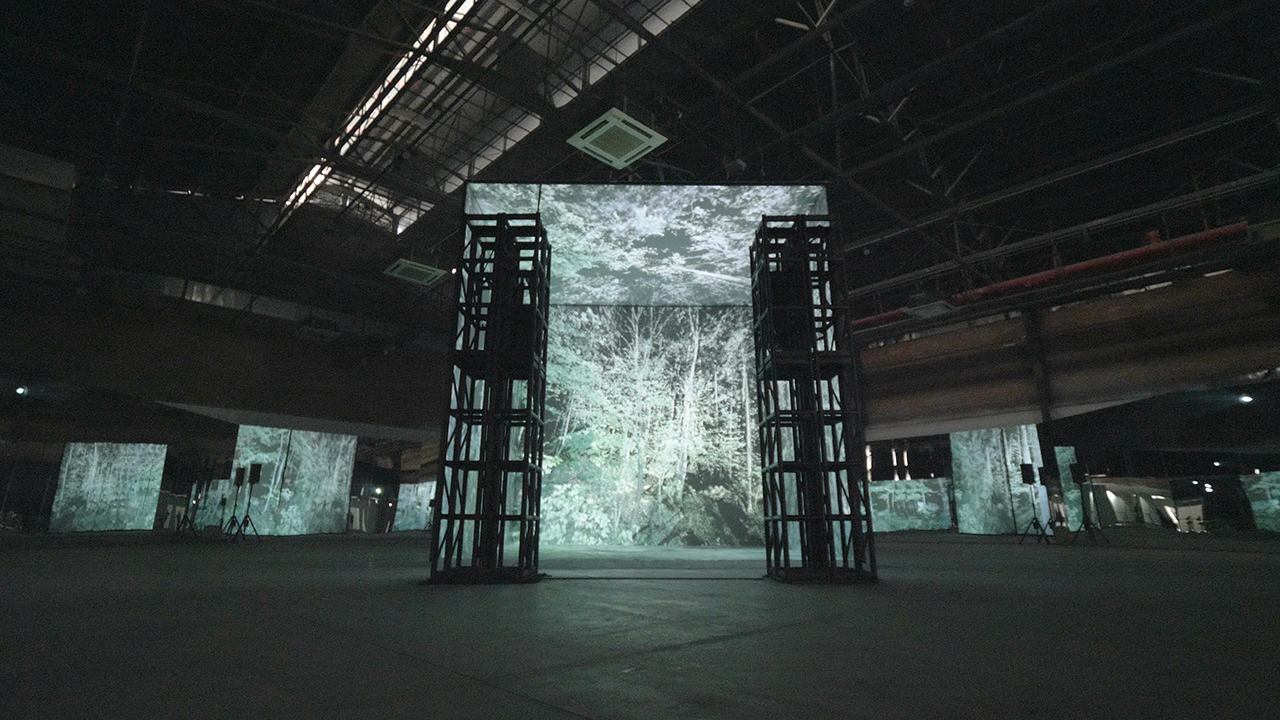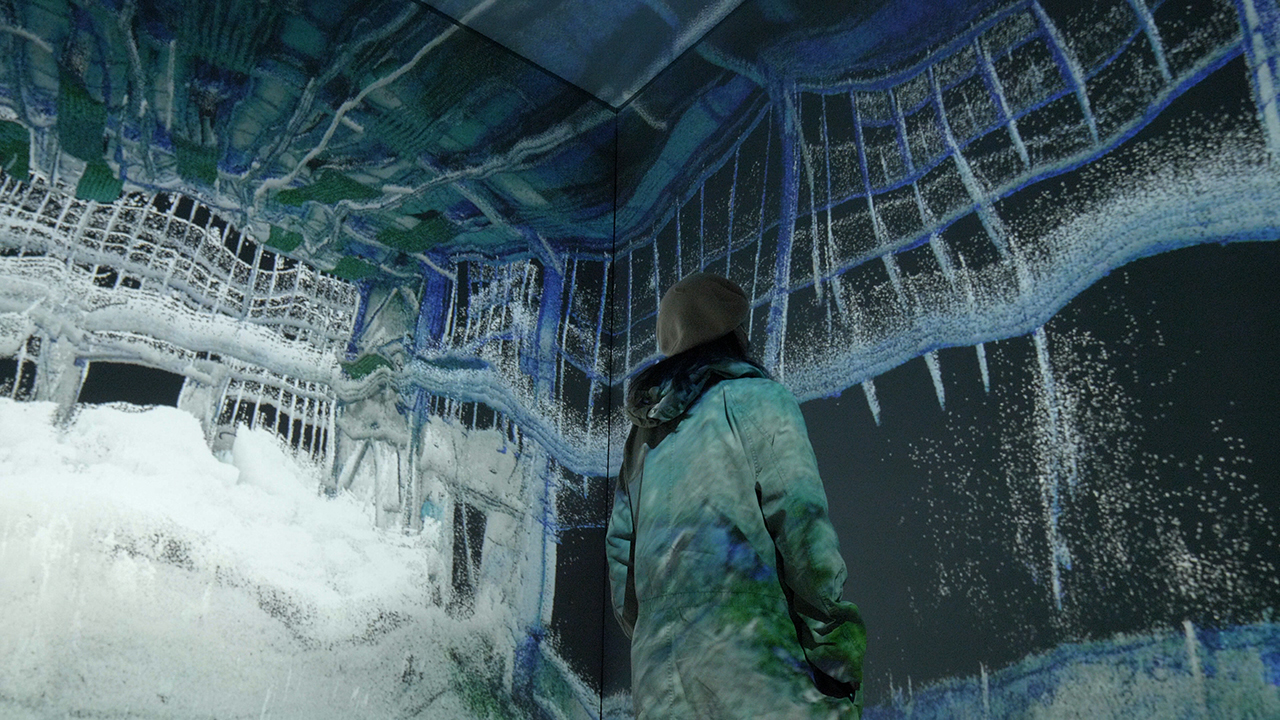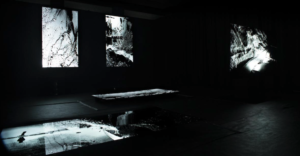A definition of digital exhibition:
“A digital exhibition is the presentation of moving images to the audience, either live or prerecorded, in public spaces, via digital distribution and projection” (Walker, 2012)
At the end of his case study on Digital Exhibitions, Walker provides his own definition of the term, one I find particularly interesting:
“Digital Exhibition is not a medium, but is a designation offered to a subjectively defined collection of events made possible through the transmission of computational binary pulse signals.”
If a digital exhibition is a designation, then the term becomes more broad in its application, yet simultaneously encapsulates the fundamental elements that an exhibition requires to become a digital exhibition.
Digital exhibitions are not necessarily in-person. The concept of a completely Virtual Exhibition has been explored for those who are unable to visit or access the space in person. It was brought to the forefront for museums and public exhibition spaces during the COVID-19 pandemic. In Indonesia at the start of 2020, a virtual exhibition was created in order to allow the public to continue experiencing the art from the safety of their homes. 94.25% of the 87 visitor responded positively to the experience (Widjono, 2020). Completely virtual and online exhibitions can be successful. Therefore the advantage to having a physical exhibition be partially digital already, means that it is by default much easier to present, publicise and share to a wider online audience; thus creating a Virtual Exhibition.
Digital technology transforms the norms by letting the visitor be present in the exhibition area via sensors and tracking their performance along with artworks. Positive museum experiences come from successful interaction with artwork and other visitors. In exhibition areas, artworks and installations are incomplete without visitors’ participation, whose active engagement makes the artwork ‘alive’ (Harma, 2011).
Lev Manovich (2006) considers augmented space – which is slowly becoming a reality – as one opportunity for cultural institutions to take a more active role. Although many video installations already serve as experimental sites for exploring novel image configurations within a space, institutions as a whole can leverage their own unique assets – physical spaces – to foster the creation of fresh spatial forms of art and moving images. In doing so, they can take the initiative in testing one aspect of the future of augmented space.
As artists and curators move beyond the boundaries of the picture frame and into the physical space of the white cube, walls, floors; they should also feel comfortable taking another step: viewing this space as layers of data. This does not diminish the importance of the physical space; rather, it is through the interplay of the physical space and the data that some of the most remarkable art of our time is being produced.
Mathias explores immersive digital exhibitions (IDE) and its emergence within a broader context of society and the experience economy (2022). The public demand for such experiences is linked to the expansion and popularity of the experience economy. Experiences have always had an important role to place in the economic factor of society across the globe, as it is sometimes seen as a “genre of economic output” (Pine, Pine and Gilmore, 1999). Miles declared experience as “the new ideological terrain of consumer society” (2020) and the modern life post-WWII is viewed by Schulze (1995) as experience driven.
relevant examples of Digital Exhibitions:
Ryoichi Kurokawa: https://www.ryoichikurokawa.com/project/saw.html
Using LiDAR and sound, he creates immersive audiovisual installations across the globe. His project: s.asmbli [wall] utilises the interior 5 faces of a cube room with 6ch video projection and quadraphonic sound for an 8 minute looped recording.


ScanLAB Projects specialise in exploring the use of large scale 3D scanning in architecture and the creative industries. https://scanlabprojects.co.uk/work/framerate/
Their recent project FRAMERATE, currently in Montreal:
“FRAMERATE: Pulse of the Earth’s hypnotic imagery bears witness to landscapes in flux. The impact of human behaviour and the immense force of nature unfolds around you across an array of screens. This is a space where your perspective may shift.”

“Three-dimensional stories unfold across an array of screens. Hypnotic imagery surrounds you. Audio shifts through the space”
These exhibitions utilise multiple screens/projections upon multiple orientations. It creates a more immersive experience when the content is not limited to only what you see directly in front of you. The user is rather encompassed in the space.
If you’re reading this in order, please proceed to the next post: ‘Chaos and Places’.
Molly Munro
References
Harma, V. (2011) ‘Interaction and Performativity in Digital Art Exhibitions’, Nordisk Museologi, (1), p. 98. Available at: https://doi.org/10.5617/nm.3148.
Kurokawa, R. (2020) Ryoichi Kurokawa: S.asmbli [ wall ], RYOICHI KUROKAWA | s.asmbli [ wall ]. Available at: https://www.ryoichikurokawa.com/project/saw.html (Accessed: April 20, 2023).
Manovich, L. (2006) ‘The poetics of augmented space’, Visual communication, 5(2), pp. 219–240.
Mathias, N. (2022) ‘Meta-artistic immersion in digital exhibitions. History – mobilization – spectatorship’, Journal of Aesthetics & Culture, 14(1), p. 2129160. Available at: https://doi.org/10.1080/20004214.2022.2129160.
Miles, S. (2020) The Experience Society: how consumer capitalism reinvented itself. Pluto Press.
Pine, B.J., Pine, J. and Gilmore, J.H. (1999) The experience economy: work is theatre & every business a stage. Harvard Business Press.
Schulze, G. (2005) Die erlebnisgesellschaft: Kultursoziologie der gegenwart. Campus Verlag.
Walker, S.J. (2012) Interpretations of digital exhibition. Assessing the academic pertinence of commercial and political definitions. A case study. Available at: http://hdl.handle.net/10454/5334.
Widjono, R.A. (2020) ‘Analysis of User Experience in Virtual Art Exhibition During Pandemic’:, in Proceedings of the International Conference of Innovation in Media and Visual Design (IMDES 2020). International Conference of Innovation in Media and Visual Design (IMDES 2020), Tangerang, Indonesia: Atlantis Press. Available at: https://doi.org/10.2991/assehr.k.201202.059.

